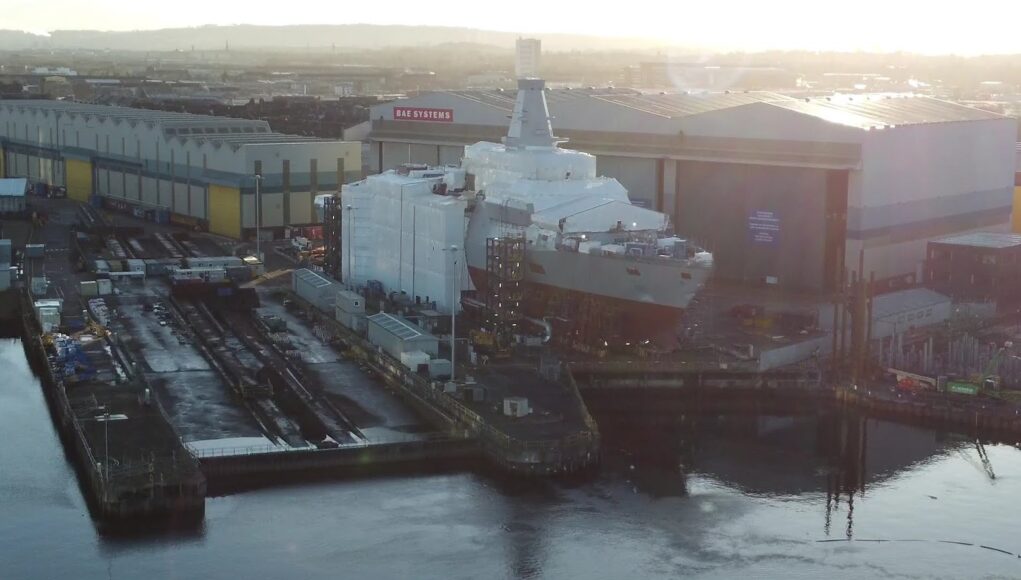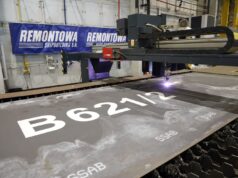You’d be forgiven for thinking that the future of shipbuilding on the Clyde rests entirely on frigate build halls or skills academies, but the future also involves solar panels.
BAE Systems is taking significant steps towards sustainability by planning to install solar panels at two of its major shipyards in Glasgow.
After securing approval for its Scotstoun facility, the company submitted a similar proposal for its Govan shipyard.
Back in 2021, BAE Systems set an ambitious goal to achieve net zero greenhouse gas emissions across its operations by 2030. This is part of the global effort to tackle climate change, aligning with the UN’s Race to Zero campaign.
In 2022, their top ten largest sites accounted for a substantial 42% of their total energy consumption. To meet their targets, BAE Systems is focusing on buying renewable energy and developing on-site renewable electricity supplies, which is a big step in cutting down their indirect greenhouse gas emissions.
The Scotstoun shipyard, located on South Street, is gearing up for a solar makeover. With the green light from the council, this facility will soon be equipped with Vertex S backsheet monocrystalline modules.

According to the specs I was able to find in the planning permission documents, these panels boast an impressive efficiency of 21.8% and can produce up to 435W each.

The first phase, starting in 2024, will see 12,000 square meters of solar panels installed, capable of generating 1MW of energy.

This setup will be positioned to soak up as much sunlight as possible.
Meanwhile, over at the Govan shipyard on Govan Road, the proposed solar installation features Meyer Burger White panels. These high-performance panels, designed in Switzerland and made in Germany, use advanced SmartWire Connection Technology for optimal efficiency.

Later in 2024, the Govan facility will undergo a similar transformation with 11,000 square metres of panels installed.

The panels will be installed across six roof sections, facing both west and east to capture the sun throughout the day.

BAE Systems aims to have solar panels generating around 4MW of electricity at their Glasgow sites by 2026. Interestingly, this energy output aligns with their baseline energy requirements for the area.
It’s also udnerstood that new inverter technology will optimise power generation from each solar module, producing up to 25% more energy than typical systems. These projects will not only cut carbon emissions and energy costs but also create local jobs during the installation phases.
Beyond solar energy, BAE Systems is exploring various ways to further reduce their carbon footprint. They plan to decarbonise heating systems using electric power, improve building energy efficiency, install LED lighting, and expand the use of electric vehicles.
Additionally, enhancing their electricity metering infrastructure will help manage energy consumption more effectively across their Clyde operations. They are also keeping an eye on emerging technologies like carbon capture to continue their decarbonisation efforts in the coming years.
Residents and interested parties can follow the progress of the Govan project through the Glasgow City Council’s planning permission portal. Now, where did I put my drone?














Solar power in Scotland? Umm..is this as dumb as it sounds?
4MW of electricty is expected to be generated, that is 4MW more than is currently generated by the roofs of those buildings.
It doesn’t matter if you could get 6MW if you installed them in Cornwall, because the shipyards are Scotland.
The reason I ask is that nothing is cost free. How much do the panels cost? How much do they cost to maintain? When do they need to be replaced ? All these factors apply to all Solar installations. However this is Glasgow it’s very northern hemisphere. Also it also doesn’t experience the bluest and clearest of skies even when it isn’t bathed in winter darkness.
It makes less difference than you might think.
Anyway if I was building a big industrial roof I’d be cladding it with panels too.
One thing BAE have and that is a lot of roof real estate in Glasgow.
With panel prices really low now is the time to go for solar on industrial roofing.
I guess it will supply 20-30% of their site consumption which will save fortunes on the electricity bill?
BAE is a company so there main goal is profit so I doubt they would do this if it wasn’t financially viable.
It wouldn’t surprise me if we see in the future planing laws that state if your building a new industrial unit with flat roof space over a certain square foot you will be required to have solar panels.
I’m amazed it isn’t law already TBH.
If you want to reduce CO2 outputs it is an obvious way……
BUUUUUT owning a share of some industrial buildings the grid very often can’t use feed in.
SOOOOO we had to get a bit creative and get a bakery into two of our units to use the electricity locally.
The bakery love it as they can bake in the day using mostly solar and at night using off peak…..and they save money as they get cheap daytime electricity…..I don’t think they will ever move out!
We used most of the roofs on 10 units to supply these two units. The other units only use 7kW so they have that sort of area of panels dedicated to them. We can always juggle the connections and out a few more panels up.
They’d be cheaper if they sourced them from China…
Does that come complete with the iSpy(TM) network connected to send back all data to China?
I’m all for renewables but there are drawbacks in placing it in Northern hemisphere locations. Mainly the huge reduction of sunlight during the winter. They’re not going to be doing a lot for at least 3 months of the year. The reverse is true in the Summer they’re going to be producing electricity late into the evening after the production day has ended. You’d need to backstop them with some sort of battery energy storage solution. All this is great but it’s expensive. So if this is going to be economic I imagine it would only be as a result of some sort of subsidy. Alternatively they’re going to be selling the electricity to the grid as they generate it. However their usefulness to the grid is pretty limited since it will only produce electricity at time when the demand is low.
I’ve always wondered how cost effective solar pannels are in the UK. I’d imagine as time goes by, the pannels become more efficient and cheaper to make/maintain. Maybe they receive subsidies.
you would have thought they would have looked at LED lighting long before now. On the other hand my doctor waiting room still has fluorescent tubes lighting!!
I’ve got a lot of LED lights and have consistently found that their life-expectancy is well short of what’s generally advertised. Maybe the fluorescents are less maintenance?
The LED panels don’t seem to have the best of life time ( we have had to change 2 in work today. may be about two years old) the LED tubes seem a lot better. There quite a few that are 4 to 5 years old and are ok
More importantly than the CO2 reduction is the energy security. Domestic energy production owned by BAE with no vulnerable infrastructure like undersea cables.